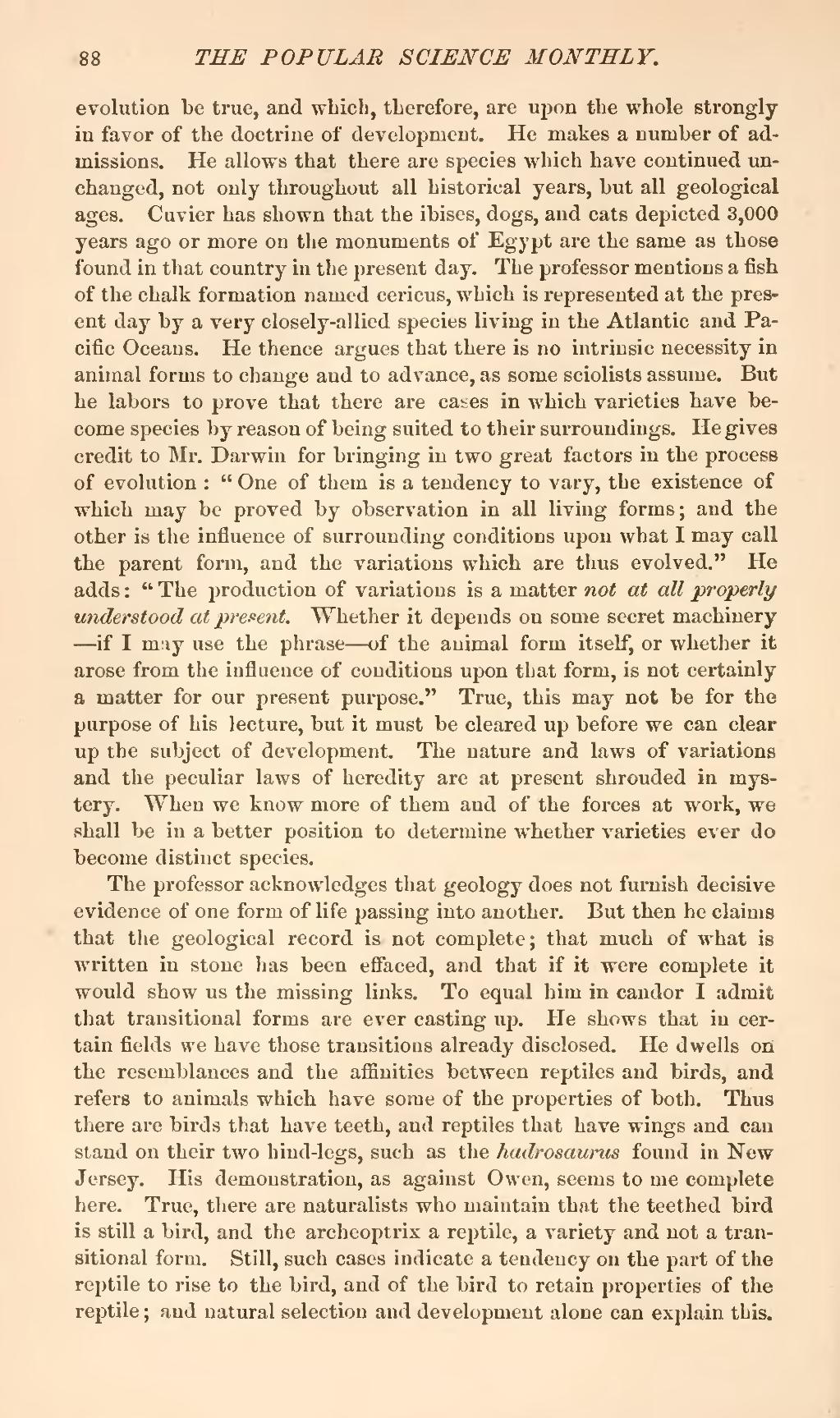evolution be true, and which, therefore, are upon the whole strongly in favor of the doctrine of development. He makes a number of admissions. He allows that there are species which have continued unchanged, not only throughout all historical years, but all geological ages. Cuvier has shown that the ibises, dogs, and cats depicted 3,000 years ago or more on the monuments of Egypt are the same as those found in that country in the present day. The professor mentions a fish of the chalk formation named cericus, which is represented at the present day by a very closely-allied species living in the Atlantic and Pacific Oceans. He thence argues that there is no intrinsic necessity in animal forms to change and to advance, as some sciolists assume. But he labors to prove that there are cases in which varieties have become species by reason of being suited to their surroundings. He gives credit to Mr. Darwin for bringing in two great factors in the process of evolution: "One of them is a tendency to vary, the existence of which may be proved by observation in all living forms; and the other is the influence of surrounding conditions upon what I may call the parent form, and the variations which are thus evolved." He adds: "The production of variations is a matter not at all properly understood at present. Whether it depends on some secret machinery—if I may use the phrase—of the animal form itself, or whether it arose from the influence of conditions upon that form, is not certainly a matter for our present purpose." True, this may not be for the purpose of his lecture, but it must be cleared up before we can clear up the subject of development. The nature and laws of variations and the peculiar laws of heredity are at present shrouded in mystery. When we know more of them and of the forces at work, we shall be in a better position to determine whether varieties ever do become distinct species.
The professor acknowledges that geology does not furnish decisive evidence of one form of life passing into another. But then he claims that the geological record is not complete; that much of what is written in stone has been effaced, and that if it were complete it would show us the missing links. To equal him in candor I admit that transitional forms are ever casting up. He shows that in certain fields we have those transitions already disclosed. He dwells on the resemblances and the affinities between reptiles and birds, and refers to animals which have some of the properties of both. Thus there are birds that have teeth, and reptiles that have wings and can stand on their two hind-legs, such as the hadrosaurus found in New Jersey. His demonstration, as against Owen, seems to me complete here. True, there are naturalists who maintain that the teethed bird is still a bird, and the archeoptrix a reptile, a variety and not a transitional form. Still, such cases indicate a tendency on the part of the reptile to rise to the bird, and of the bird to retain properties of the reptile; and natural selection and development alone can explain this.
